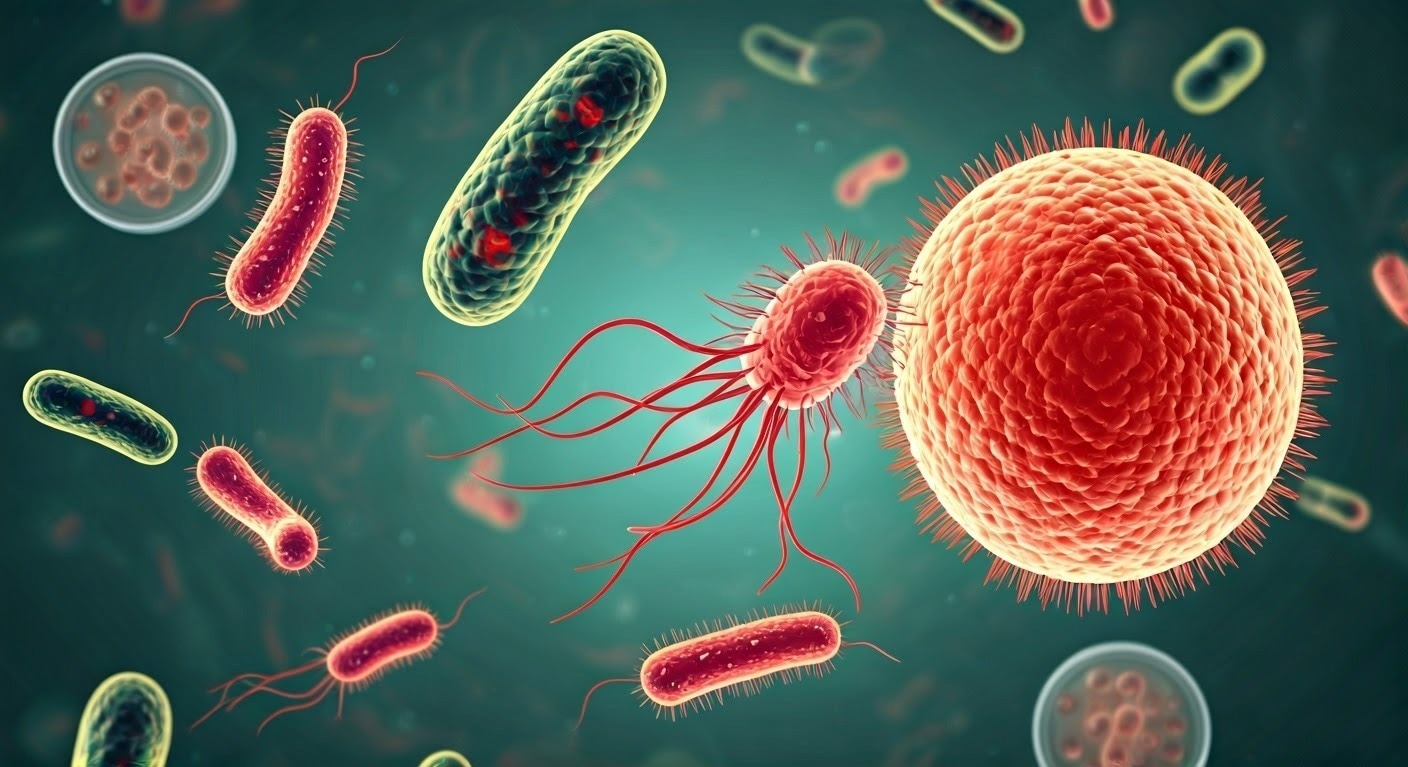Understanding MRSA’s resistance: A novel cell division pathway sheds light on how this dangerous pathogen evades antibiotics, advancing our fight against superbugs.
Study: Two codependent routes lead to high-level MRSA. Image Credit: Shutterstock AI / Shutterstock.com
MRSA and antibiotic resistance
Antibiotics’ contributions to modern medicine cannot be understated. They have significantly reduced disease-associated mortality and provided unprecedented extensions to human lifespans.
Unfortunately, the widespread and often irresponsible use of antibiotics has contributed to a surge in antibiotic-resistant bacteria capable of surviving in antibiotic-rich environments due to the antibiotic-mediated loss of non-resistance microbiota. The origin of ‘superbugs,’ defined as pathogenic strains exhibiting simultaneous resistance to multiple antibiotic classes, presents a critical public health concern.
Methicillin-resistant Staphylococcus aureus (MRSA), for example, comprises gram-positive bacteria that can cause several potentially lethal respiratory infections. Conventionally, S. aureus infections were treated with β-lactam antibiotics.
Over time, the pathogen developed resistance to the β-lactamase, which led to the introduction of methicillin, a penicillin-like cell-division-suppressing antibiotic, as a treatment alternative. The rising prevalence of MRSAs has compromised methicillin treatment, with current disease-associated mortality rates ranging from 15% to 60%.
Previous observations have linked methicillin resistance in MRSA pathogens to the acquisition of the non-native mecA gene coding for the Penicillin Binding Protein 2a (PBP2a). However, the mechanisms through which PBP2a protects previously methicillin-sensitive S. aureus (MSSA) from β-lactam action remain unclear.
About the study
The present study utilized multiple S. aureus strains that differ in their methicillin resistance to elucidate the mechanisms involved in their ability to overcome methicillin’s suppression of transpeptidase-derived cell division.
Experimental procedures involved incubating wild-type (SH1000), low-resistance MRSA (SH1000 mecA+), and high-resistance clinical MRSA (COL; SCCmec Type I) under varying methicillin concentrations of zero, 25 μg/ml, and 50 μg/ml. High-resolution atomic force microscopy (AFM) was subsequently used to elucidate the peptidoglycan (PG) structural alterations accompanying the different combinations of drug load and resistances tested.
Mutagenesis techniques were then used to generate genetically unique isogenic S. aureus strains differing in their combinations of PBP1, PBP2, PBP2a, and inducer elements. These experiments allowed the researchers to identify different cell division pathways under different methicillin concentrations and elucidate alternative cell division processes that may bypass conventional β-lactamase action.
Study findings
The progression of methicillin from wild-type to high-resistance MRSA was observed to occur in two steps. First, the acquisition of PBP2a bypasses the essential transpeptidase activity of native PBP2. Subsequently, a mutation in the rpoB gene, a subunit of bacterial polymerase enabling nucleotide replication and cell division, prevents MRSAs from needing PBP1, thereby negating the functional pathway of methicillin action.
These mutations are critical in rpoB and rpoC; however, they can also be found in associated genes such as rel, clpXP, gdpP, pde2, and lytH. Previous studies have identified these mutations but failed to elucidate their relevance.
The present study categorized these mutations as ‘potentiator mutations’ that increase MRSA resistance to over 50 μg/ml by triggering a cell division pathway independent of PBP1 transpeptidase activity, thereby preventing methicillin’s ability to suppress PBP1.
PBP2a exhibited poor binding affinity with methicillin or other β-lactam antibiotics. Although PBP2a could not entirely replace the need for native PBP2 or PBP1, it could form dimers with these molecules, augmenting their activity and preventing antibiotic-mediated deactivation.
Conclusions
The current study identifies chromosomal missense ‘potentiator’ mutations involved in regulating cellular physiology that allow for homogenous high-level antibiotic resistance. These are distinct from the previously known auxiliary genes that reduce antibiotic resistance. Together, these findings suggest that combinations of genetic and environmental factors contribute to the genesis of high-level MRSA strains.
Bacterial acquisition of non-native mutant PBP2 genes, referred to as PBP2a, enables low-level antibiotic resistance. This resistance is achieved by reducing drug-binding efficacy and forming dimers with native PBP2 and PBP1, thereby enhancing their activity during antibiotic stress.
A small portion of the bacterial population may subsequently develop potentiator mutations in rpoB and similar replication-associated genes. These mutations remove the PBP1 requirement for cell division, which allows bacterial growth, even under high antibiotic concentrations.
When the high methicillin concentrations successfully eliminate wild and even low-resistance MRSA strains, the remaining potentiator mutation-possessing survivors will rapidly establish themselves as the dominant S. aureus strain, ultimately contributing to the global MRSA crisis.
It is by studying these processes in tandem that we can understand basic mechanisms of the bacterial cell cycle and reveal ways to control antibiotic resistance.”
Journal reference:
- Adedeji-Olulana, A. F., Wacnik, K., Lafage, L., et al. (2024). Two codependent routes lead to high-level MRSA. Science 386(6721). doi:10.1126/science.adn1369.
Source link : News-Medica

